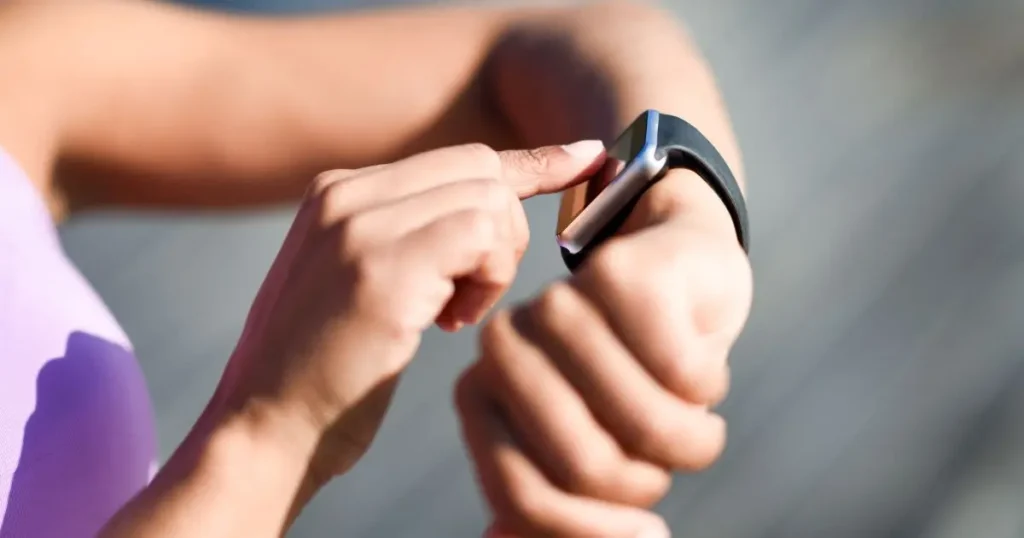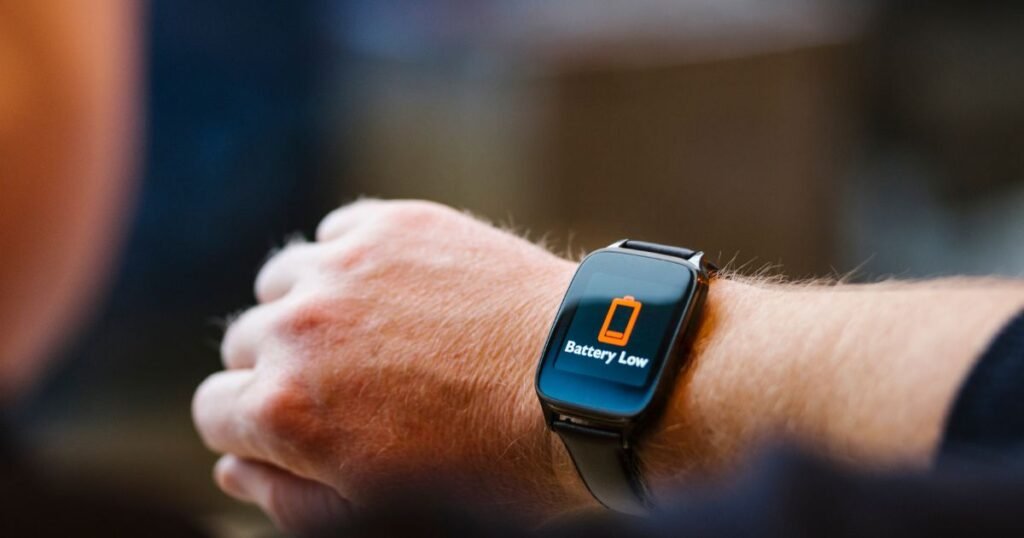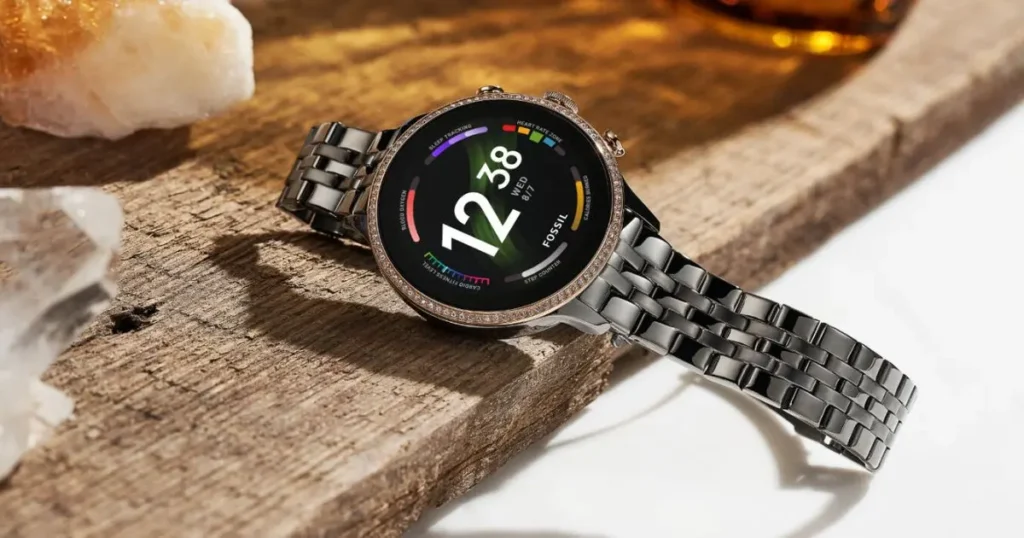
Smartwatches have come a long way from simple step counters and notification screens. They’ve evolved into sophisticated wearables that combine advanced health monitoring, AI-driven software, extended battery life, and sleek aesthetics. If you’re curious about the new smartwatch features on the horizon or the smartwatch trends that are shaping the market, this guide offers a comprehensive look at the most exciting developments in the field.
Health and Wellness Take Center Stage
Beyond Basic Heart-Rate Monitoring
Most modern smartwatches track heart rate continuously, providing insights into resting heart rate, activity intensity, and even stress levels. However, the latest trend expands these capabilities:
- ECG (Electrocardiogram) Features: Popularized by brands like Apple and Samsung, ECG sensors offer the potential to detect irregular heart rhythms, such as atrial fibrillation (AFib). Although these devices aren’t substitutes for full medical screenings, they bring clinical-style monitoring closer to home.
- Blood Oxygen and Respiratory Metrics: SpO2 sensors provide oxygen saturation levels, while advanced breath-rate tracking can signal potential respiratory issues or help interpret sleep disturbances. Expect broader adoption and improvements in accuracy as technology evolves.
For a deeper dive into advanced fitness capabilities, explore our best smartwatches for fitness guide, highlighting models known for top-tier workout features.
Sleep Tracking with More Depth
Many smartwatches now claim to evaluate sleep stages (light, deep, REM), but newer trends focus on sleep quality. Integration of temperature sensors, more sensitive motion detectors, and overnight heart-rate variability aims to offer a holistic picture of how restful your sleep truly is—potentially spotting signs of restlessness or aiding in early detection of conditions like sleep apnea.
Stress and Mental Health Insights
Wearables increasingly measure stress through heart-rate variability (HRV), galvanic skin response (GSR), or other physiological markers. By blending these metrics with AI-driven apps, smartwatches can encourage mindfulness breaks, relaxation breathing, or recommend calm-down routines when you’re feeling overwhelmed.
Smartwatches Embrace Durable and Versatile Designs

Premium Materials and Rugged Models
Manufacturers are catering to diverse lifestyles:
- Rugged Editions: Targeted at outdoor adventurers, these models often feature titanium or sapphire glass for extreme durability (e.g., Apple Watch Ultra, Garmin Fenix). They sport reinforced bezels, higher water resistance, and extended battery life designed for multi-day treks.
- Luxury Builds: On the opposite spectrum, stainless-steel finishes, premium leather straps, and designer collaborations meet the needs of a fashion-focused audience. Wear OS devices by traditional watchmakers (Fossil, Michael Kors) highlight aesthetics while still delivering robust features.
Personalization Through Modular Bands
Swappable and customizable watch bands are not new, but the variety has exploded. Silicone, metal, leather, nylon, and sports loops let users adapt the watch for fitness or a formal setting. This personalization fosters a sense of ownership and ensures the watch fits seamlessly into everyday style.
New Display Technologies
Micro-LED and Advanced AMOLED
Traditional OLED/AMOLED screens—prized for vibrant colors and power efficiency—are undergoing refinement. Next-gen displays like Micro-LED promise even higher brightness and reduced battery consumption, potentially paving the way for always-on screens that don’t tank battery life.
Improved Touch and Haptic Feedback
As screens become more responsive, haptic engines and subtle vibrations give instant feedback to swipes and taps, improving user interaction without relying on loud notifications. This level of refinement aims to offer a tactile, premium feel reminiscent of mechanical watch feedback.
Battery Innovations and Energy Efficiency

Multi-Day or Week-Long Endurance
Previously, many smartwatches struggled to last more than a day or two. Yet a growing segment boasts multi-day battery life thanks to optimized chipsets, low-power modes, and more efficient sensors. Some fitness-oriented models (Garmin, Amazfit) manage up to a week or more, albeit with fewer app-based features than mainstream watches.
Fast Charging and Wireless Solutions
Newer watches support quick-charge capabilities, giving hours of use after just a short time on the charger. Wireless charging stands or modular docks offer the convenience of dropping your watch on a pad—no more fiddling with cables or proprietary plugs.
Solar-Integrated Watches
Solar panels embedded in the watch face (e.g., select Garmin Solar editions) provide incremental power boosts. While still niche, this technology hints at a future where sunlight can offset daily consumption and extend usage for outdoor enthusiasts.
Expanding App Ecosystems and AI Integration
Wear OS and watchOS Evolve
Google’s Wear OS and Apple’s watchOS are locked in a race to enhance user experiences. Expect:
- Richer app libraries: More third-party developers optimizing their apps for the wrist.
- Better cross-device syncing: Transfer phone calls, music, or workouts from your phone to watch seamlessly.
- Enhanced voice assistants: Siri, Google Assistant, or Bixby can handle more complex tasks hands-free, from ordering rides to scheduling appointments.
AI-Driven Insights
Machine learning transforms raw data (steps, heart rate, temperature) into personalized guidance:
- Adaptive Workout Recommendations: Watches propose workouts based on recovery data, prior performance, and daily stress levels.
- Smart Coaching: AI chatbots or digital coaches provide feedback in real time—like adjusting pace during runs or reminding you to hydrate.
- Predictive Health Alerts: Combining heart rate, respiratory data, and user habits to flag potential anomalies before they escalate.
Cellular Connectivity and 5G Possibilities

LTE-Enabled Standalone Watches
Many mainstream watches already offer LTE options, enabling phone-free calls, messages, or streaming. This feature is invaluable for runners or travelers who want to remain connected without lugging a phone. However, LTE often taxes battery life, making energy optimization a priority for upcoming models.
5G on the Horizon?
While not widespread in watches yet, 5G could potentially enhance real-time data processing, video calling, or AR capabilities on your wrist. The primary challenge remains miniaturizing 5G antennas and power demands to fit a watch form factor without compromising battery.
Greater Emphasis on Data Privacy and Security
Handling Sensitive Health Data
Smartwatches collect intimate metrics (heart rate, SpO2, ECG). As they move toward medical-grade features, there’s an increasing push to secure user data. Expect stronger end-to-end encryption, on-device data processing to limit cloud dependence, and compliance with health data regulations (e.g., HIPAA in the U.S.).
Integration with Health Records
Some brands partner with healthcare systems to store ECG readings or blood pressure logs. As these collaborations deepen, watch owners may share data with doctors. Transparent consent and robust anonymization will be cornerstones of user trust.
Fashion-Tech Collaborations

Designer Partnerships
Leading watchmakers (Fossil, Citizen) or fashion labels (Michael Kors, Louis Vuitton) release Wear OS-based devices that blend style with smarts. The ongoing trend sees established luxury or sports-lifestyle brands align with major tech players to produce distinct versions of popular devices.
Custom Watch Faces and Series
Exclusive watch face collections, brand tie-ins (like with sports teams, movies, or anime), and limited-edition straps spark excitement. Personalizing the digital watch face to match user identity becomes a statement piece—mirroring the mechanical watch world’s emphasis on design and brand prestige.
Beyond the Wrist: Ecosystem Expansion
Wearable Integration with IoT
Smartwatches increasingly serve as hubs for controlling Internet of Things (IoT) devices—lighting, thermostats, security systems—from your wrist. The synergy between watch, phone, and home devices cements the watch’s role as a central control unit.
Multi-Sensor Wearables
Companies experiment with flexible or even skin-adhesive devices that complement watch data, forming a body-area network of sensors. The watch might be the main interface, but additional sensors (like e-textiles or next-gen earwear) gather specialized data for a fuller health snapshot.
For a focus on advanced health applications, see our top 5 smartwatches for health monitoring in 2025, showcasing upcoming wearables designed with cutting-edge medical-like features in mind.
Looking Ahead: Future Possibilities
- Continuous Glucose Monitoring
Some prototypes aim to measure glucose levels non-invasively, an absolute game-changer for those with diabetes or glucose sensitivity. Though still in R&D, any breakthrough here could redefine the watch’s medical potential. - Contextual AI
Picture a watch that automatically adjusts notifications based on your calendar, stress level, or location—like muting alerts during an intense workout or prompting a short walk if you’re sedentary too long. - Advanced Gesture Control
Future watches might interpret subtle wrist or hand gestures to navigate apps, answer calls, or send quick commands—minimizing screen touches. - Augmented Reality (AR) Companion
With Apple’s and other tech giants’ forays into AR headsets, the watch might become a peripheral that supplies real-time sensor input or simplified controls for AR experiences.
Conclusion
The latest trends in smartwatch technology revolve around deeper health metrics, robust battery and display innovations, improved app ecosystems, and next-level AI coaching. From new smartwatch features like SpO2-based sleep tracking to advanced wearables that incorporate rugged builds or chic designer appeal, the industry caters to a wide range of consumer demands—fitness enthusiasts, style-conscious professionals, and everyday users wanting a seamless link between phone and wrist.
As battery technology, sensor accuracy, and software intelligence progress, expect wearables to inch closer to medical-grade capabilities while offering ever more streamlined daily conveniences. Whether you’re eyeing a top-tier model from Apple, Samsung, or Garmin, or exploring lesser-known brands pushing new frontiers, the future of smartwatches lies in enhanced health monitoring, integrated AI, and a growing emphasis on personalization—showing no signs of slowing down. This wave of innovation will undoubtedly redefine how we interact with technology, manage our wellness, and even perceive our sense of style on our wrists.
FAQ: Latest Smartwatch Trends
Q1: How soon will micro-LED displays become mainstream in smartwatches?
Micro-LED is still emerging. Some high-end or experimental models might adopt it in the next 1–2 years, but broader adoption could take longer, depending on manufacturing costs and yields.
Q2: Is battery life improving enough for full-week usage on all watches?
Brands like Garmin and Amazfit demonstrate multi-day stamina for fitness watches, but feature-rich devices (Apple Watch, most Wear OS models) still typically last 1–3 days, especially with always-on screens and LTE.
Q3: Are health features like ECG or SpO2 clinically accurate?
They’re clinically validated to a point but shouldn’t replace formal medical tests. Many devices are FDA-cleared for detection of irregular heart rhythms but disclaim they’re not diagnostic tools.
Q4: Will 5G be relevant for watches soon?
Likely not immediately mainstream. 5G demands higher power usage, so the industry must perfect smaller, more efficient modems and larger battery capacities first.
Q5: How safe is the personal data collected by these devices?
Leading brands implement strong encryption. Still, with more health data stored on or synced via cloud, watch owners should review privacy policies and consider whether to share or limit sharing with third-party apps.
